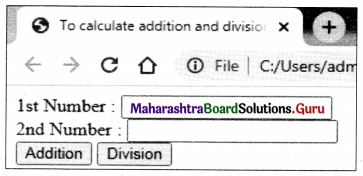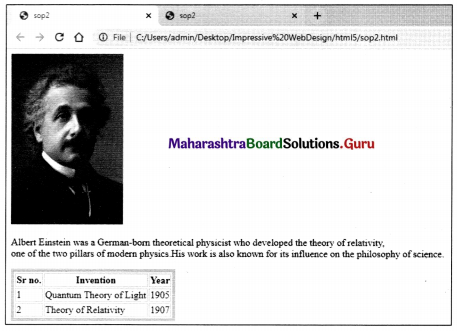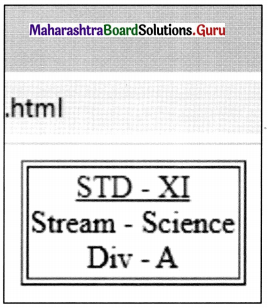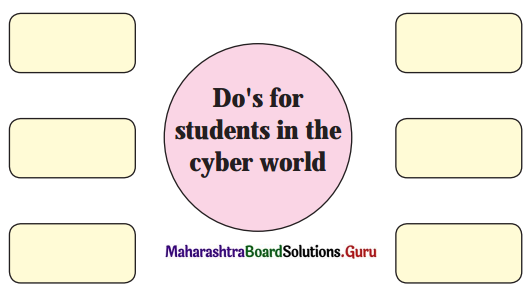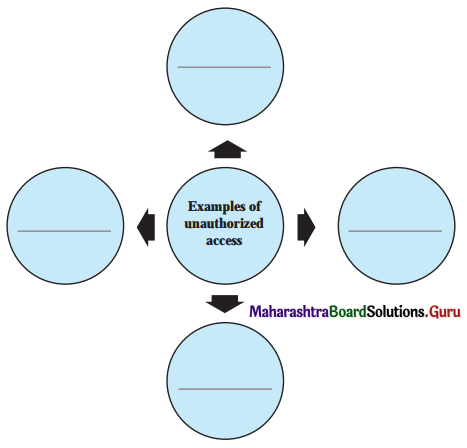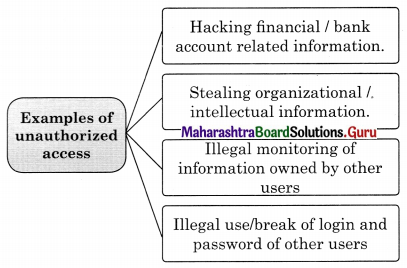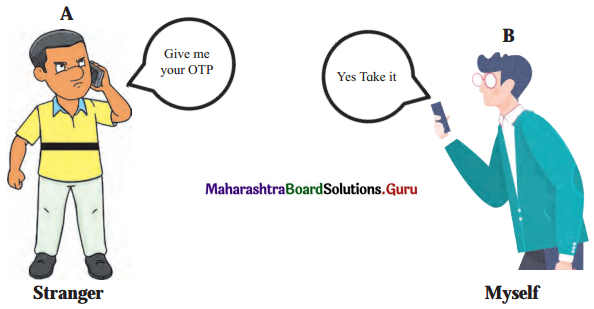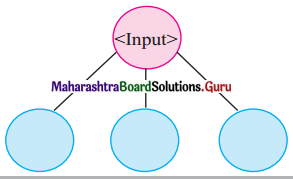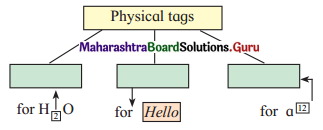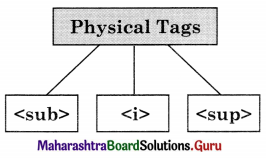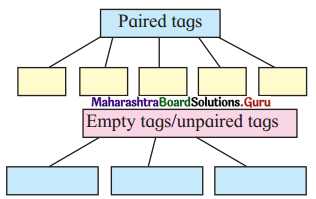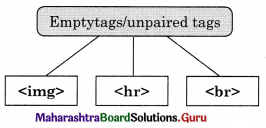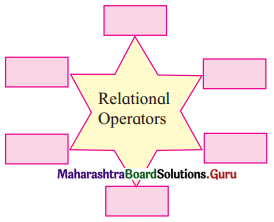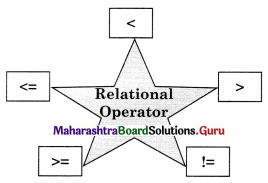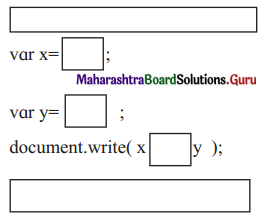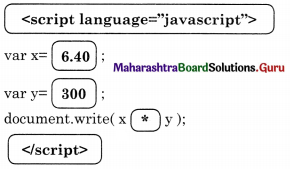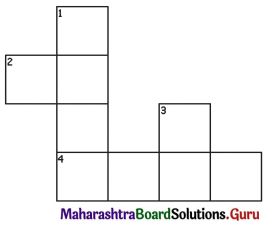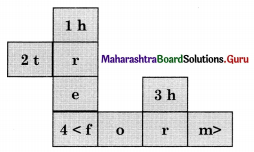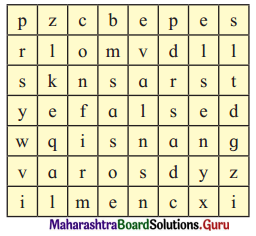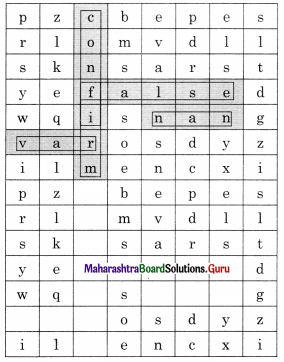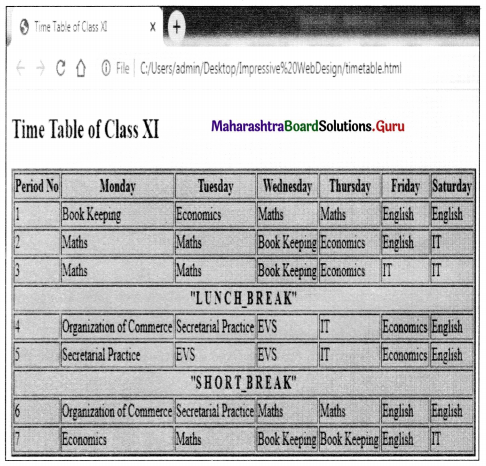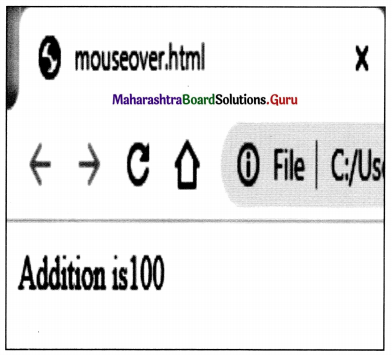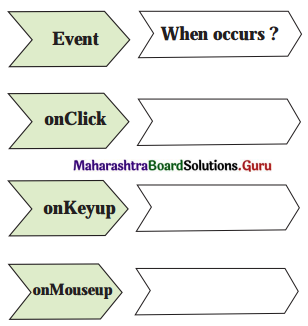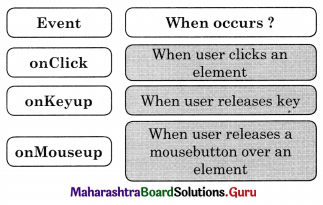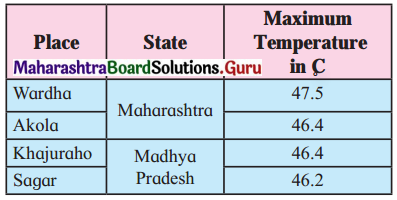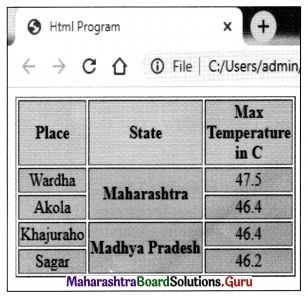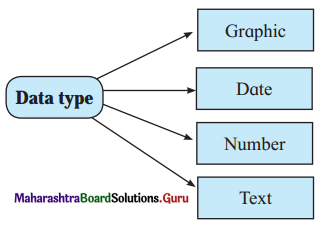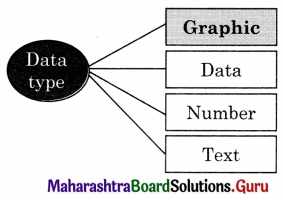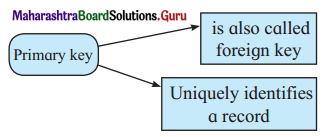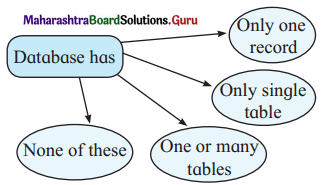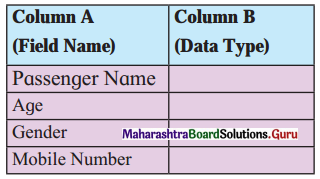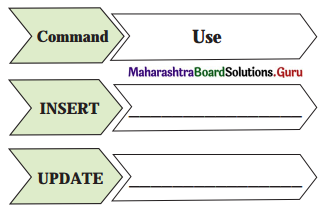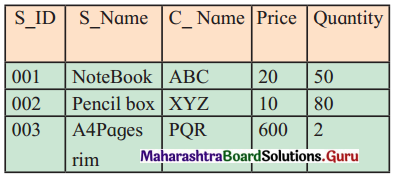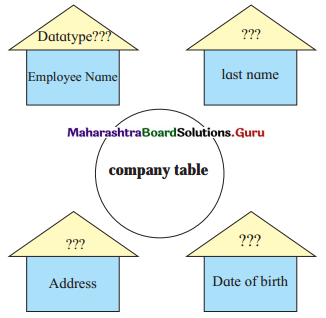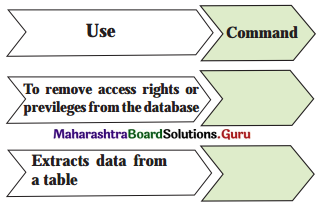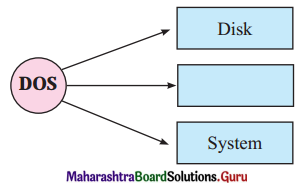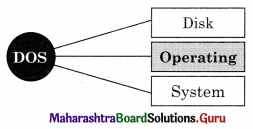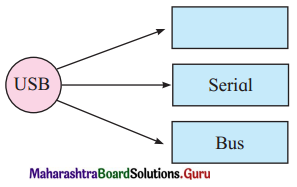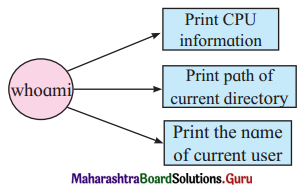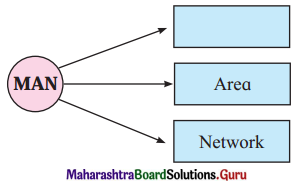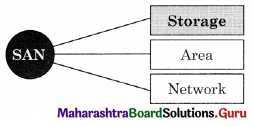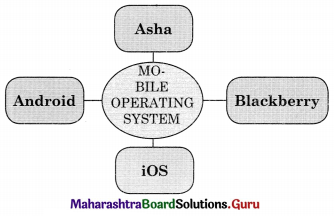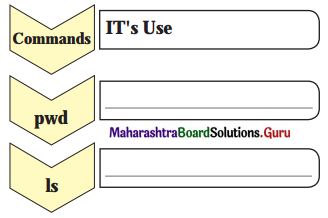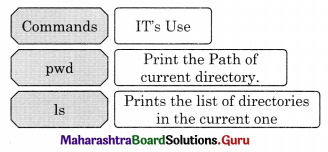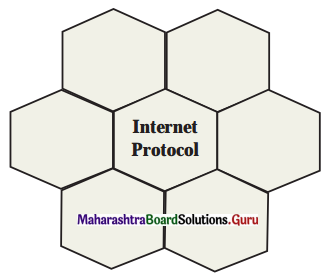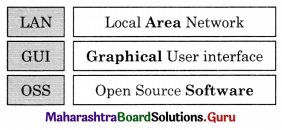Company Meetings – I 11th Secretarial Practice Chapter 7 Solutions Maharashtra Board
Balbharti Maharashtra State Board Class 11 Secretarial Practice Solutions Chapter 7 Company Meetings – I Textbook Exercise Questions and Answers.
Class 11 Secretarial Practice Chapter 7 Exercise Solutions
1A. Select the correct answer from the options given below and rewrite the statements.
Question 1.
The intimation to members stating the day, date, time, and place of meeting is known as ______________
(a) quorum
(b) agenda
(c) notice
Answer:
(c) notice
Question 2.
The notice of the general meeting must be sent to all members ______________ clear days before the meeting.
(a) 24
(b) 21
(c) 14
Answer:
(b) 21

Question 3.
The person who presides over the meeting is known as ______________
(a) Secretary
(b) Chairman
(c) Director
Answer:
(b) Chairman
Question 4.
A proxy can vote only in the case of voting by ______________
(a) division
(b) show of hand
(c) poll
Answer:
(c) poll
Question 5.
The appointment of an auditor requires ______________
(a) resolution requiring special notice
(b) an ordinary resolution
(c) a special resolution.
Answer:
(b) an ordinary resolution
Question 6.
A ______________ is the proposal put before the meeting for discussion and decision.
(a) Motion
(b) Resolution
(c) Minutes
Answer:
(a) Motion
Question 7.
The right of casting vote is given to the ______________
(a) Director
(b) Chairman
(c) Secretary
Answer:
(b) Chairman
Question 8.
Minutes must be recorded within ______________ days of the conclusion of the meeting.
(a) 60
(b) 21
(c) 15
Answer:
(c) 15

Question 9.
______________ resolutions are not passed in general meeting.
(a) Ordinary
(b) Special resolution
(c) Resolution by circulation
Answer:
(c) Resolution by circulation
Question 10.
For passing special resolution ______________ majority is required.
(a) 51%
(b) 66%
(c) 75%
Answer:
(c) 75%
Question 11.
For alterations in the Articles of Associations ______________ is required.
(a) a special resolution
(b) an ordinary resolution
(c) a resolution requiring a special notice
Answer:
(a) a special resolution
Question 12.
Provisions about resolutions are contained in ______________ of a company.
(a) Articles of Association
(b) Memorandum of Association
(c) Prospectus
Answer:
(a) Articles of Association
Question 13.
When a poll is demanded it must be taken within ______________ hours.
(a) 48
(b) 36
(c) 12
Answer:
(a) 48
1B. Match the pairs.
Question 1.
| Group ‘A’ |
Group ‘B’ |
| (a) Chairman |
(1) Proposal put before the meeting |
| (b) Quorum |
(2) Casting vote |
| (c) Motion |
(3) Amendment |
| (d) Minutes |
(4) Minimum number of members required for a valid meeting |
| (e) Notice |
(5) Voting |
| (f) Proxy |
(6) Maximum number of members required for a valid meeting |
|
(7) Record of a meeting |
| (8) Accepted motion |
| (9) Intimation stating agenda, day, date, time and place of meeting |
| (10) Representative of a member |
| (11) Representative of a director |
| (12) Formal motion |
Answer:
| Group ‘A’ |
Group ‘B’ |
| (a) Chairman |
(2) Casting vote |
| (b) Quorum |
(4) Minimum number of members required for a valid meeting |
| (c) Motion |
(1) Proposal put before the meeting |
| (d) Minutes |
(7) Record of a meeting |
| (e) Notice |
(9) Intimation stating agenda, day, date, time and place of meeting |
| (f) Proxy |
(10) Representative of a member |
1C. Write a word or a term or a phrase which can substitute each of the following statements.
Question 1.
The person who signs the minutes of the meeting.
Answer:
Chairman
Question 2.
A method of voting where members can vote in proportion to the number of shares held.
Answer:
Voting by-poll

Question 3.
A resolution passed by simple majority.
Answer:
Ordinary Resolution
Question 4.
A resolution passed by a 3/4 majority.
Answer:
Special Resolution
Question 5.
A company officer who is required to draft the minutes of the meeting.
Answer:
Secretary
Question 6.
A person who conducts the proceedings of the meeting.
Answer:
Chairman
1D. State whether the following statements are True or False.
Question 1.
Minutes are prepared before the meeting.
Answer:
False
Question 2.
A maximum number of members required to attend the meeting is called a Quorum.
Answer:
False

Question 3.
Meetings are held only to review the progress of the company.
Answer:
False
Question 4.
Chairman has the right to conduct the meeting.
Answer:
True
1E. Find the odd one.
Question 1.
Next Business Motion, Previous Question Motion, Special Resolution.
Answer:
Special Resolution
Question 2.
Ordinary Resolution, Resolution requiring special notice, Substantive motion.
Answer:
Substantive Motion
1F. Complete the sentences.
Question 1.
The authority who can convene the general meeting of shareholders is ______________
Answer:
Board of Director
Question 2.
The advance intimation about the day, date, time, etc. of a meeting sent to the members is called as ______________
Answer:
Notice
Question 3.
The minimum number of members required to be present at a meeting is called as ______________
Answer:
Quorum

Question 4.
A person who attends a general meeting and votes on behalf of a member is called as ______________
Answer:
Proxy
Question 5.
A proposal put before a meeting for consideration and adoption is called as ______________
Answer:
Motion
Question 6.
A formal and final decision taken in a meeting is called as ______________
Answer:
Resolution
Question 7.
The written records of proceedings of a meeting is called as ______________
Answer:
Minutes
1G. Select the correct option from the bracket.
Question 1.
| Group ‘A’ |
Group ‘B’ |
| (1) Voting by-poll |
………………… |
| (2) ……………………… |
Special resolution |
| (3) Substantive Motion |
………………….. |
| (4) ……………………… |
Chairman |
(Presides over the meeting, Proxy, an amended Motion, 3/4 or 75% majority)
Answer:
| Group ‘A’ |
Group ‘B’ |
| (1) Voting by-poll |
Proxy |
| (2) 3/4 or 75% majority |
Special Resolution |
| (3) Substantive Motion |
an amended Motion |
| (4) Presides over a Meeting |
Chairman |
1H. Answer in one sentence.
Question 1.
What are Minutes?
Answer:
Minutes are the written records of the proceedings of the meeting.
Question 2.
What is Notice?
Answer:
Notice is an advance intimation given by the company informing the day, date, time, and place of the meeting.
Question 3.
What is Ordinary Resolution?
Answer:
A resolution that is passed by a simple majority i.e., 50% or more is called Ordinary Resolution.

Question 4.
What is the agenda?
Answer:
Agenda is a list of items to be discussed or things to be done at the meeting.
Question 5.
Who is Chairman?
Answer:
A chairman is a person who presides over a meeting.
Question 6.
What is the point of order?
Answer:
A point of order is an objection or question raised by any member regarding irregularity in the proceedings of the meeting.
1I. Correct the underlined word and rewrite the following sentences.
Question 1.
Minutes are prepared before the meeting.
Answer:
Minutes are prepared after the meeting.
Question 2.
Resolution is a proposal put before a meeting for discussion.
Answer:
Motion is a proposal put before a meeting for discussion.

Question 3.
Polling papers are used for voting by show of hands.
Answer:
Polling papers are used for voting by-poll.
Question 4.
A Motion is a final decision taken in the meeting.
Answer:
A Resolution is a final decision taken in the meeting.
Question 5.
The agenda is prepared after the meeting.
Answer:
The agenda is prepared before the meeting.
1J. Arrange in proper order.
Question 1.
(a) Drafting Minutes
(b) Sending notice
(c) Confirming quorum
Answer:
(a) Sending Notice
(b) Confirming Quorum
(c) Drafting Minutes
Question 2.
(a) Motion
(b) Resolution
(c) Voting
Answer:
(a) Motion
(b) Voting
(c) Resolution
2. Explain the following terms/concepts:
Question 1.
Ordinary Resolution
Answer:
Ordinary Resolution (Section 114) A resolution that is passed by a simple majority i.e. 50% or more is called ordinary resolution. More than 50% of the votes should be in favour of the motion. An ordinary resolution need not be submitted to the Registrar of Companies. The notice of the meeting need not require to explain the particulars of an ordinary resolution.
Example:
- Approval of Director’s report and Auditor report
- Alteration of share capital
- Declaration of dividend
- Approval of final accounts
- Election of director
- Appointment of Secretary, Auditor, etc.

Question 2.
Agenda
Answer:
Agenda is a list of items to be discussed or things to be done or the business to be transacted at the meeting. It is sent along with the notice. A secretary prepares the agenda in consultation with the Chairman. The business at the meeting is transacted according to the order in which it appears in the agenda, routine matter first followed by special matters. The agenda is prepared as per the nature and the scope of the meeting.
Question 3.
Quorum
Answer:
Quorum (Section 103) is the minimum number of members required to be present for transacting a valid business. Without quorum proceeding of the meeting becomes invalid. The quorum should be present throughout the meeting i.e. from beginning till the end of the meeting. Secretary must check the quorum before the commencement of the meeting.
Question 4.
Proxy
Answer:
A proxy is a person, who can attend and vote at the meeting on behalf of an absent member. Every member of a company has a statutory right to appoint a proxy. When a member is not in a position to attend the meeting, he can appoint his representative. The representative of an absent member is called a Proxy. He has no right to speak at the meeting.
Question 5.
Amendment
Answer:
An amendment is any alteration proposed by a member to the original motion when a motion is under discussion. Amendments are generally moved to alter original motion by
- Adding some new words or
- Deleting some words or
- Replacing some words or
- Changing the position or place of words.
The amendment should be relevant to the main motion and it must not alter the original motion.
Question 6.
Motion
Answer:
A motion is a proposal put before the meeting for discussion and decision. A person who proposes a motion is called a proposer or a mover of a motion. A motion is subject to alteration before it is adopted by the meeting.

Question 7.
Special Resolution
Answer:
The resolution which is passed by a special majority is called a Special resolution. It is passed by 3/4th or 75% majority. The purpose of passing this resolution should be mentioned in the notice of the meeting. A special resolution is passed in general meetings only. Notice of special resolution has to be given to the members 21 clear days before the meeting. A copy of the special resolution must be filed with the Registrar of companies through e-filing on the MCA portal within 30 days of passing the resolution.
Examples:
- Change in the name of the company (Section 13).
- Change in the registered office of the company from one state to another (Section 12).
- Alteration in the object clause of the company.
- Reduction in the authorized share capital of the company.
- Alteration in the Articles of Association of the company (Section 14)
Question 8.
Notice
Answer:
Proper notice must be given to a proper person for a valid meeting. Notice is an advance intimation given by the company informing the day, date, time, and place of meeting and business to be transacted at the meeting. It is given in writing to all those who are entitled to receive it. In case of general meeting, 21 days clear notice before meeting and 7 days in case of the Board meeting.
Question 9.
Minutes
Answer:
Minutes are the written records of proceedings of a meeting. It is a summary of all discussions and decisions taken at the meeting. It is a concise and accurate record of business transacted at the meeting. Minutes are prepared by the secretary within 15 days after the meeting. Minutes are recorded in minutes book and written in the past tense. After preparing minutes, it should be passed in consecutive meetings. Minutes book for General meetings and Board meetings are maintained separately.
Question 10.
Point of order
Answer:
A point of order is a question or objection raised by any member when he wants to point out an irregularity in the proceedings of the meeting. It is raised to draw the attention of the chairman.
The point of order can be raised on the following points:
- Absence of quorum
- Breach of any rule related to meeting
- Misbehavior of any member
- Unparliamentary or Improper language used by any member.
3. Study the following case/situation and express your opinion.
1. XYZ Ltd Co. sent notice of its Annual General meeting to its members. In the meeting, a resolution is to be passed on altering the Articles of Association.
Question (a).
Should agenda also be sent with Notice?
Answer:
Yes, the agenda should be sent along with the notice.
Question (b).
What type of resolution is needed to alter the Articles?
Answer:
A special resolution is needed to alter the Articles of Association.
Question (c).
Should the resolution for altering articles be filed with the Registrar of Companies?
Answer:
A copy of the special resolution passed for altering Articles of Association must be filed with the Registrar of Companies within 30 days of its passing.

2. A General meeting of a public limited company is to be held. State the provision of quorum for-
Question (a).
meeting of the company which has less than 1000 members?
Answer:
The quorum for less than 1000 members is 5 members.
Question (b).
meeting of the company which has more than 5000 members?
Answer:
The quorum for more than 5000 members is 30 members.
Question (c).
meeting of the company which has 2500 members?
Answer:
The quorum for 2500 members is 15 members.
3. Mr. P is elected as chairman of the General Meeting. Please advise him on the following matters:
Question (a).
What should be done if the votes cast in favour and against the motion are equal?
Answer:
A chairman of the general meeting (Mr. P) can exercise casting votes in case of a tie in votes.
Question (b).
How many votes can a member cast under the poll method?
Answer:
Under the poll method, a member can cast his votes as per the number of shares held by him. ‘One shares One vote’ is a rule.
Eg. If Mr. A has 100 shares, he can cast 100 votes.
Question (c).
What should Mr. P do if any point of order is raised by a member?
Answer:
If the point of order is raised, Mr. P has to stop discussion on an original motion under discussion and give his ruling/decision immediately on point of order.
4. Distinguish between the following.
Question 1.
Agenda and Minutes
Answer:
| Basis |
Agenda |
Minutes |
| 1. Meaning |
Agenda is a list of ‘the things to be done or ‘business to be transacted at the meeting. |
Minutes are the record of the business transacted, resolutions passed and decisions arrived at by the meeting. |
| 2. Contents |
Agenda, generally contains ‘what is to be done, motions, etc. |
Minutes generally contain ‘what has been done, resolution, etc. |
| 3. When Prepared |
The agenda is prepared before the meeting. |
Minutes are prepared after the conclusion of the meeting. |
| 4. Tense |
It is written in the future tense. |
It is always in the past tense. |
| 5. Importance |
Agenda enables the members to know, what business the meeting is going to transact. The Chairman also can conduct the meeting as per the agenda. |
Minutes are evidence of the decisions taken at a meeting. Even an absent member can know about the proceedings of the meeting. |
| 6. Legal Status |
Agenda has no legal importance. The Companies Act has not provided any rules regarding the drafting of an agenda. |
Minutes are the legal evidence of resolutions passed at the meeting. It provides abstract proof of the proceedings at the meeting. It can even be produced in the court of law as a legal document. |
| 7. Approval |
The agenda is prepared by the secretary and approved by the Chairman, but no approval of the members is required. |
Minutes are prepared by the secretary and approved by the members, finally, it is confirmed by the Chairman. |
| 8. Alterations |
Alterations in the order of items in an agenda can be made if the members attending the meeting agree to it. |
Minutes once recorded in the minute book, signed by the Chairman, and confirmed by the members cannot be altered. |
Question 2.
Motion and Resolution
Answer:
| Basis |
Motion |
Resolution |
| 1. Meaning |
Motion is a written proposal placed before the meeting for discussion and decision. |
Resolution is a duly approved and accepted motion in the meeting. |
| 2. Amendment |
Motion can be amended before it is put to vote. |
Resolution once passed, cannot be amended. |
| 3. Recording |
A motion is not recorded in the minute’s book of a meeting. |
All resolutions must be recorded in the minute book of a meeting. |
| 4. Filing |
The motion need not be filed with the Registrar of Companies. |
Special resolutions are required to be filed with the Registrar of the Companies within 30 days of the date of its passing. |
| 5. Withdrawal |
It may be withdrawn by mover before it is put to vote. |
Once it is approved, it cannot be withdrawn. |
| 6. Evidence |
It can not be used as evidence. |
It can be used as legal evidence. |
| 7. Types |
Motion can be (a) Formal motion (b) Substantive motion |
Resolution can be (a) Ordinary resolution (b) Special resolution |
Question 3.
Voting by show of hands and Voting by-poll.
Answer:
| Basis |
Voting by show of hands |
Voting by-poll |
| 1. Meaning |
Voting by show of hands is a method of voting in which members cast their votes by raising their hands. |
Voting by-poll is a method in which every member is given a paper to record their votes according to the number of shares held by them. |
| 2. Secrecy |
Votes are given openly, hence secrecy is not maintained. |
Votes are recorded on voting papers, hence secrecy is maintained. |
| 3. Voting by Proxy |
Proxies are not allowed to vote under this method. |
Proxies can vote only in this method. |
| 4. No. of Votes |
‘One man One vote’ is the principle of voting. |
‘One share One vote’ is the principle of voting. |
| 5. Effect |
The decision by show of hands is canceled, if the poll is demanded. |
The decision taken by-poll is final and it cannot be canceled. |
| 6. Nature |
It is a democratic method of voting. |
It is a capitalistic method of voting. |
5. Answer in brief.
Question 1.
State the importance of company meetings.
Answer:
The term meeting is derived from the Latin word ‘Maeta’ means ‘face to face.
A meeting may be defined as ‘Any gathering or assembly or coming together of two or more persons for transacting some lawful business of a common concern.’ – P.K.Ghosh.
Importance of Company Meetings:
- Members get the opportunity to come together and discuss the work and progress of the company.
- Minutes of the last meeting is read, which enables the absent and present member to get a clear idea about the matters discussed in the previous meeting.
- It enables the management to discuss and decide about their policies, plan, programs, etc, and its implementation.
- Problems faced by the company can be discussed at the meeting and a decision can be arrived.
- Legal formalities related to convening and conducting meetings of the company are fulfilled by conducting meetings.
- Appointment of directors and auditors, declaration of dividend, approvals of the annual report, financial statements, auditors report, etc. can be done in the meetings.
- Strict action can be taken against defaulters in the meeting.

Question 2.
State the legal provisions regarding Proxy.
Answer:
Legal Provisions regarding Proxy are as follows:
- Appointment: Any member of a company entitled to attend and vote at the meeting shall be entitled to appoint a proxy to attend and vote at the meeting on his behalf. A minor cannot be appointed as a proxy. The proxy cannot be appointed for the Board Meeting. The appointment of a proxy is valid for an adjourned meeting.
- Right: A proxy is not allowed to speak at the meeting. The proxy can vote only on resolutions passed by voting by-poll.
- Membership: A person appointed as a proxy need not be a member of the company.
- Proxy form: A member appointing a proxy must submit a duly completed proxy form in the registered office of the company at least 48 hours before the meeting.
- Inspection: A member can inspect any proxy form by giving not less than three days’ notice to the company.
Question 3.
When can the point of order be raised?
Answer:
A point of order is a question or objection raised by any member when he wants to point out an irregularity in the proceedings of the meeting. It is raised to draw the attention of the chairman.
The point of order can be raised on the following points:
- Absence of quorum
- Breach of any rule related to meeting
- Misbehaviour of any member
- Unparliamentary or improper language used by any member.
When the point of order is raised, discussion on the original motion is stopped for some time. The chairman gives his decision on point of order. The decision given by the chairman is final and binding on the meeting.
Question 4.
Explain any four methods of Voting?
Answer:
Methods of Voting:
(i) Voting by Voice:
In this method, the members are requested to say ‘Yes’ if they favour the motion or say ‘No’ if they are against the motion. The decision is taken on the basis of the volume of voice. This method is rarely used. The volume of voice may not give a clear and correct idea about the majority of votes.
(ii) Voting by Division:
In this method, present members are divided into two groups. Members in favour and those against the motion are asked to go to different rooms. Then the sense of the meeting is ascertained by counting and the chairman declares the result.
(iii) Voting by show of Hands:
This method is used in the general meetings of a company. After the discussion on the motion, the Chairman requests the members to raise their hands in favour or against the motion. The chairman declares the result by counting a number of hands in favour or against the proposal. ‘One man One vote’ is the principle.
(iv) Voting by Poll:
The poll can be demanded after the declaration of result by show of hands. Under this method, each member can vote in proportion to the number of shares held by him. ‘One share One vote’ is the principle. Polling papers are given to members and proxies for recording their votes. The result of the poll is final and not to be challenged.

Question 4.
State the importance of Minutes.
Answer:
The importance of Minutes are as follows:
- Official record: Minutes provide a ready reference to all the activities related to the meeting. It is the most important, official, and authentic record on which people can trust.
- Evidence: Minutes can be used as prima facie evidence in a court of law.
- Future reference: Minutes is a permanent record. It can be used for taking future managerial decisions.
- Legal provisions: Minutes are prepared in order to comply with the provisions of the Companies Act and Secretarial Standard.
- Information to absent members: Minutes help the absent members to know the proceedings of the meeting, as it is not always possible for everyone to attend the meeting.
- Reminder: The matters discussed at the meeting are noted down in minutes. It acts as a reminder to the concerned people.
- Information about resolution: The motion and discussion on the motion are reflected in the resolution. Interested parties can always refer to the text of a resolution when there is contradiction or confusion.
- Inspection of Minutes: As per the Companies Act, Minutes Book should be kept at the registered office of the company and every member has right to inspect the Minutes book at the general meetings.
6. Justify the following statements.
Question 1.
The meeting must be duly convened and properly constituted.
Answer:
- A meeting is defined as Any gathering assembly or coming together of two or more persons for the transaction of some lawful business of the common concern.
- A meeting becomes valid when it is duly convened and properly constituted.
- A meeting should be convened by proper authority.
- It must be convened as per the provisions of the Companies Act, 2013.
- Notice and Agenda of the meeting must be given 21 clear days before the meeting to all those who are entitled to receive it.
- Thus, meetings must be duly convened and properly constituted.
Question 2.
Chairman is responsible for the proper conduct of meetings.
Answer:
- A Chairman is a person who presides over a meeting.
- There should be a proper person in the chair i.e. chairman to conduct the proceedings of the meeting smoothly, fairly, and properly.
- A chairman should maintain overall discipline in the meeting.
- A chairman has to maintain order at the debate and decide the priority of speakers so that members can get a chance to express their views.
- A chairman should give his ruling on point of order at the earliest.
- A chairman can initiate an order for voting and declare the result of voting.
- A chairman must prevent improper behaviour, if any, by the member and prevent the use of unparliamentary language.
- Thus, Chairman is responsible for the proper conduct of meetings.

Question 3.
Motion can be amended.
Answer:
- A motion is a proposal put before the meeting for discussion and decision.
- The amendment is an alteration proposed by a member to the original motion under discussion.
- Amendment can be done by adding some new words or deleting some words in the original motion.
- Amendment can be done by replacing some words or by changing the position of words to the original motion.
- The amendment should be relevant to the original motion.
- The amendment is done to make the original motion more effective and meaningful.
- Amendment can be accepted or rejected. If accepted, it is considered for discussion. If approved by the meeting, it is incorporated in the original motion.
- Thus, the motion can be amended.
Question 4.
The proxy can not speak in the meeting.
Answer:
- A proxy is a representative of a member.
- A proxy can attend and vote on behalf of an absent member.
- If a member is not in a position to attend the meeting, he can appoint a proxy on his behalf.
- A proxy need not be a member of the company.
- A minor cannot be appointed as a proxy.
- A proxy has no right to speak at the meeting.
- A proxy can vote only under the poll method.
- A member appointing a proxy must submit the proxy form in the registered office of the company at least 48 hours before the meeting.
- Thus, Proxy can not speak in the meeting.
Question 5.
Notice is issued to members for a meeting along with the agenda.
Answer:
- Notice is an advance intimation given by the company informing the day, date, time, and place of the meeting.
- Agenda is given along with notice so that members can come well prepared for the meeting.
- Members come to know about the matters to be discussed at the meeting.
- If a member is not in a position to attend the meeting, he can appoint a proxy.
- Member can advise his proxy to vote on certain matters.
- Thus, a Notice is issued to members for a meeting along with the agenda.
7. Answer the following questions.
Question 1.
Explain the powers and duties of the chairman.
Answer:
A chairman is a person who presides over a meeting. There should be a proper person in the chair i.e. chairman to conduct the proceedings of the meeting smoothly, fairly, and properly.
Powers of Chairman:
- To maintain order and conduct the meeting properly.
- To maintain order at the debate.
- To decide the priority of speakers.
- To prevent improper behaviour and unparliamentary language.
- To adjourn the meeting.
- To exercise a casting vote.
- To declare the result of the voting.
- To give a ruling on point of order.
Duties of Chairman:
- To see that the meeting is duly convened and properly constituted.
- To see that the meeting is held according to the rules.
- To see that the items are discussed as per the order of the agenda.
- To maintain overall discipline in the meeting.
- To give a fair chance to members to express their views.
- To declare the result of voting.
- To check and sign minutes book.
- To act in the best interest of the company.

Question 2.
Explain the different methods of voting.
Answer:
Different methods of voting are as follows:
(i) Voting by voice:
In this method, the members are requested to say “Yes’ if they favour the motion or say ‘No’ if they are against the motion. The decision is taken on the basis of the volume of voice. This method is rarely used. The volume of voice may not give a clear and correct idea about the majority of votes.
(ii) Voting by division:
In this method, present members are divided into two groups. Members in favour and those against the motion are asked to go to different rooms. Then the sense of the meeting is ascertained by counting and the chairman declares the result.
(iii) Voting by ballot:
Under this method, every member entitled to vote is asked to record the vote on a ballot paper and deposit it in the ballot box. The votes are counted and the result is declared. This method ensures secrecy in voting.
(iv) Voting by show of hands:
This method is used in the general meetings of a company. After the discussion on the motion, the Chairman requests the members to raise their hands in favour or against the motion. The chairman declares the result by counting a number of hands in favour or against the proposal. ‘One man One vote’ is the principle.
(v) Voting electronically:
The Central Government may prescribe certain companies for having compulsory electronic voting in general meeting. Members may exercise his right to vote by electronic means.
(vi) Voting by postal ballot:
The Central Government may prescribe certain companies for having voting by postal ballot. Ballot papers are sent by post to members.
(vii) Voting by Poll:
Poll can be demanded after the declaration of result by show of hands. Under this method each member can vote in proportion to the number of shares held by him. ‘One share One vote’ is the principle. Polling papers are given to members and proxies for recording their votes. The result of poll is final and not to be challenged.
Question 3.
Explain the types of resolution.
Answer:
Types of Resolution:
(i) Ordinary Resolution:
A resolution which is passed by simple majority is called ordinary resolution. More than 50% of the votes should be in favour of motion. An ordinary resolution need not be submitted to the Registrar of Companies. The notice of the meeting need not require to explain the particulars of an ordinary resolution.
Examples:
- Approval of Directors report and Auditor report.
- Alteration of share capital
- Declaration of dividend, etc.
(ii) Special Resolution:
The resolution which is passed by special majority is called as Special resolution. It is passed by 3/4th or 75% majority. The purpose of passing this resolution should be mentioned in the notice of the meeting. A special resolution is passed in general meeting only. Notice of special resolution has to be given to the members 21 clear days before the meeting. A copy of special resolution must be filed with the Registrar of Companies through e-filing on MCA portal within 30 days of passing resolution.
Examples:
- Change in the name of the company.
- Change in the registered office of the company from one state to another.
- Alteration in the object clause of company, etc.
(iii) Resolution requiring special notice:
Some resolutions require special notice as per the companies Act or Articles of Association of the company, hence such resolutions are called resolution requiring special notice. Special Notice resolution may be ordinary or special resolution. A proposer of a motion has to give a special notice of 14 days to the company. The company should then give a notice of that resolution to all members atleast 7 days before the meeting.
Examples:
- Resolution to appoint a person as an auditor other than a retiring auditors.
- A resolution providing that a retiring auditor shall not be reappointed.
- Resolution to appoint director other than retiring director, etc.
(iv) Resolution requiring registration:
Resolution which are required to be registered with the Registrar of Companies are called as resolution requiring registration. Resolution should be filed with Registrar within 30 days of its passing.
Examples:
- All special resolutions.
- Resolution made by Board of Directors regarding appointment or re-appointment of Managing director.
- Resolution by members regarding dissolution of the company, etc.
(v) Resolution by Circulation:
When directors have to take important and urgent decisions and do not have a sufficient time to call a meeting, then a draft resolution is prepared and forwarded to all directors to pass resolution. It is called as resolution by circulation.

Activity: (Textbook Page No. 113)
Prepare an agenda for a meeting to discuss holding of Annual Day.
Answer:
|
AGENDA
Agenda for “Utsav – 2019”.
Annual day of Reliable Junior College, Mahim.
- To discuss the date, venue and time for Utsav – 2019.
- To decide and invite Chief guest for innaguration.
- To set up the various committees – Cultural Committee, Welcoming Committee, Refreshment Committee, Security Committee, Stage Committee.
- To assign the responsibilities to the various committees.
- To issue special passes for the VIP’s and guest.
- To fix the budget for the annual day.
- To decide the vendor for Momentos and Medals.
|
Maharashtra State Board 11th Std Secretarial Practice Textbook Solutions Digest

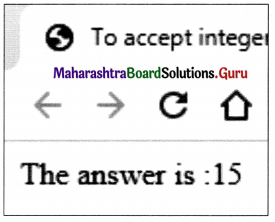
![]()
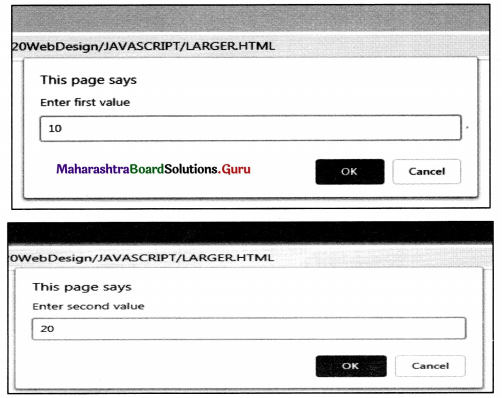
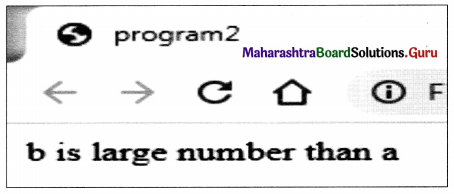
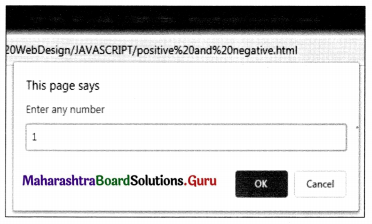
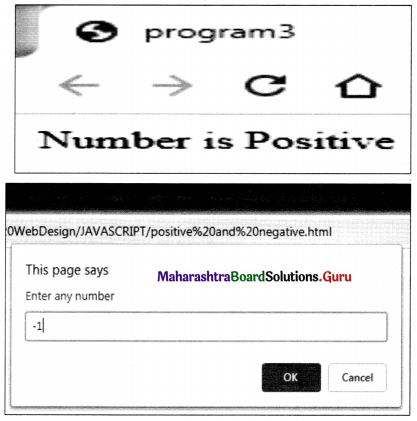
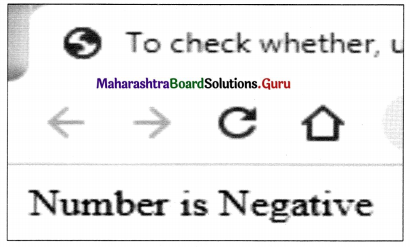
![]()
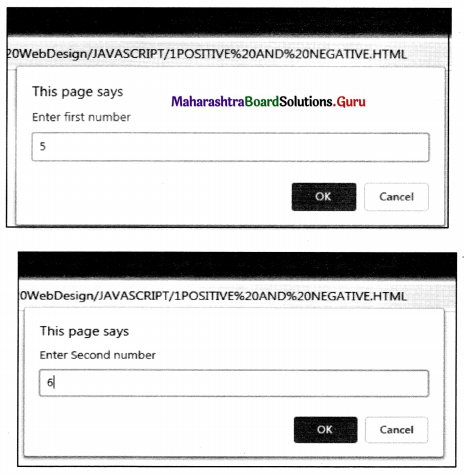
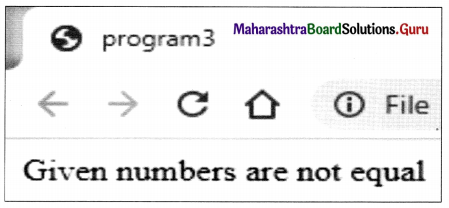
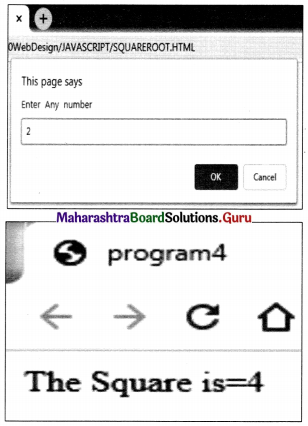
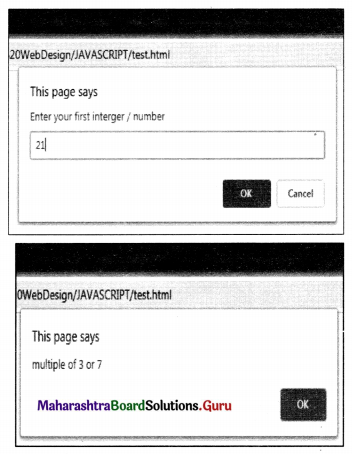
![]()
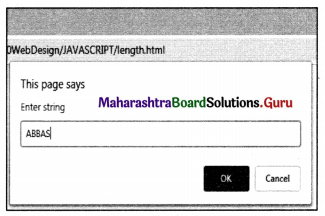
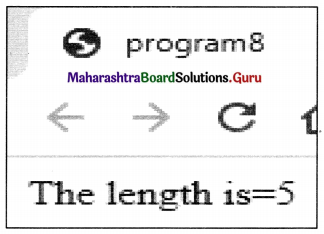
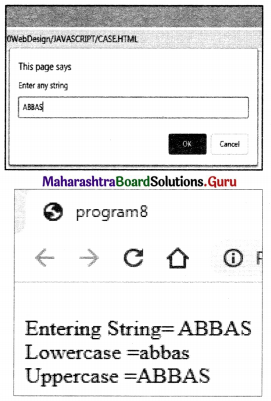
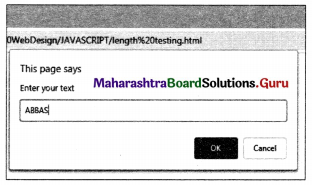

![]()
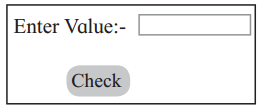
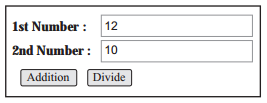
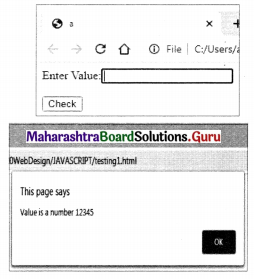
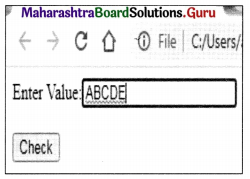

![]()
